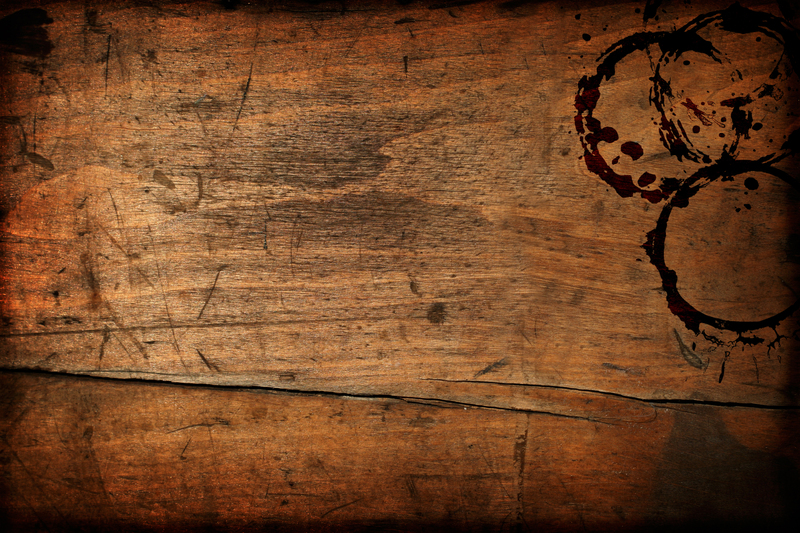Tips and Tricks to Maintain a Mold-Free Bathroom Environment
Posted on 12/09/2025
Tips and Tricks to Maintain a Mold-Free Bathroom Environment
Maintaining a mold-free bathroom environment is essential for both the health of your household and the longevity of your home. Mold and mildew not only create unsightly stains but can also trigger allergies and even cause structural damage over time. In this comprehensive guide, we delve into expert-approved tips and tricks to prevent bathroom mold, efficient cleaning routines, and strategies for keeping your bathroom fresh and safe for years to come.
Why Mold is a Problem in Bathrooms
Bathrooms are among the most mold-prone areas in any household due to a persistently humid environment, frequent water usage, and improper ventilation. Mold spores thrive in damp, warm, and poorly ventilated spaces, making bathrooms an ideal breeding ground. Once it starts growing, bathroom mold can spread quickly, colonizing grout, tiles, ceilings, and even hidden corners such as under sinks or behind toilets.
- Health Concerns: Exposure to mold spores can cause allergic reactions, asthma, respiratory problems, and other health issues, especially in sensitive individuals.
- Structural Damage: Left unchecked, mold can damage drywall, paint, caulking, and even wooden infrastructure, resulting in expensive repairs.
- Unpleasant Odors and Appearance: Mold emits a musty odor and leaves dark, unsightly stains that detract from your bathroom's appeal.

Top Tips to Keep Your Bathroom Mold-Free
1. Prioritize Proper Ventilation
One of the most efficient ways to maintain a mold-free bathroom environment is through effective ventilation. After every shower, ensure that humidity is expelled from the space to prevent condensation and mold formation.
- Install an Exhaust Fan: Make sure your bathroom is equipped with a quality exhaust fan. Let it run for at least 20-30 minutes after each shower or bath to eliminate excess moisture.
- Open Windows and Doors: If possible, leave the bathroom door open and windows ajar for a while after every use to improve air circulation.
- Wipe Down Wet Surfaces: Use a squeegee or towel to quickly dry tiles, shower doors, and mirrors after use, minimizing water residue.
2. Control Humidity Levels
Humidity is the enemy of a mold-free bathroom. Investing in a digital hygrometer can help you monitor humidity levels and ensure they remain below 50%.
- Use a Dehumidifier: If your bathroom regularly feels damp, consider using a portable dehumidifier, especially in homes without proper ventilation systems.
- Keep Shower Curtains Spread Out: After use, spread out curtains or shower doors; this promotes quick drying and discourages mold growth.
- Fix Leaks Promptly: Check under sinks, behind toilets, and around the bathtub for leaks, and address them swiftly to prevent standing water and hidden moisture buildup.
3. Regular Cleaning Schedule
Consistency is key in the battle against mold. Develop a cleaning routine that targets the main problem areas in your bathroom.
- Clean with Mold-Inhibiting Solutions: Use bathroom cleaners specially formulated to prevent mold, or create a homemade mixture of vinegar and water for an effective, natural approach.
- Focus on Grout and Tiles: Pay special attention to grout, tile lines, and caulk, where mold loves to settle. Scrub with a brush and reapply sealant as needed.
- Wash Shower Curtains and Bath Mats Frequently: Plastic curtains can be washed in the washing machine or wiped down regularly. Always let bath mats dry fully between uses.
- Empty and Clean Soap Dishes and Toothbrush Holders: These often-overlooked items can become moldy if water sits in them for too long.
4. Maintain and Upgrade Bathroom Fixtures
Outdated or worn-out fixtures can collect moisture, making it easier for mold to form. Consider minor upgrades to improve your bathroom's resistance to mold.
- Replace Caulking and Grout: Old caulk and grout can lose their waterproofing ability. Remove any sections showing black stains or decay and reapply fresh, mold-resistant products.
- Check for Hidden Water Accumulation: Inspect cabinets, flooring, and especially concealed spaces for water pooling or discoloration, which may indicate a leak.
5. Choose Mold-Resistant Materials
If you are remodeling your bathroom, select materials engineered to resist mold and humidity.
- Opt for Mold-Resistant Drywall: "Green board" or "purple board" drywall are specifically designed for moist environments and can be effective in keeping your bathroom mold-free.
- Use Mold-Inhibiting Paint: Apply paints with mildewcide additives on walls and ceilings for an additional layer of mold protection.
- Install Waterproof Flooring: Choose tiles or specially-treated wood designed to withstand moisture and discourage mold development.
Advanced Strategies to Prevent Bathroom Mold
Smart Technology Solutions
Embrace modern technology to reduce the risk of mold. Here are a few practical additions:
- Smart Exhaust Fans: Some fans are equipped with humidity sensors, automatically activating when excess moisture is detected and turning off when normal levels resume.
- Leak Detectors: Useful for early detection, these devices can alert you via smartphone if a leak or standing water is found near hard-to-reach areas.
- Automatic Dehumidifiers: Set these units to run automatically whenever the relative humidity exceeds your chosen threshold.
Natural Remedies for Mold Prevention
If you prefer eco-friendly mold prevention, natural products can often tackle minor mold problems effectively:
- White Vinegar: Spray undiluted vinegar onto affected surfaces, wait for an hour, then rinse and dry thoroughly.
- Baking Soda: Make a paste with water and apply to grout or tiles. Scrub with a brush, rinse, and dry the area.
- Essential Oils: Certain oils, like tea tree oil or eucalyptus, possess natural antifungal properties. Mix a few drops with water in a spray bottle for ongoing maintenance.
Educate Your Household
Everyone who uses the bathroom has a part to play in keeping it mold-free. Create household habits to help maintain a clean and dry bathroom:
- Encourage Towel and Cloth Drying: Hang towels and washcloths separately in a well-ventilated area to dry instead of leaving them in a heap on the floor.
- Promptly Report Leaks: Teach family members to notify you right away if they notice any drips or water damage so you can take action before mold sets in.
Long-Term Maintenance for a Mold-Free Bathroom Environment
Prevention is always better than a cure. Here's a suggested checklist to ensure you're regularly tracking the key points for long-term bathroom mold prevention:
- Weekly: Clean all surfaces using mold-killing or mold-preventing solutions. Inspect grout lines, tiles, and plastic surfaces for early signs of growth.
- Monthly: Inspect and clean the exhaust fan and dehumidifying devices.
Check for leaks or slow drains. Wash shower curtains, liners, and bath mats. - Seasonally: Check caulking and sealant for signs of deterioration and repair or replace as necessary. Test all plumbing for slow leaks or standing water.
- Annually: Consider a deep clean or professional inspection if you live in a very humid climate or your bathroom is frequently in use.
Common Mistakes That Encourage Mold Growth
Even the best intentions can be undermined by common oversights. Avoid the following pitfalls to support a mold-free bathroom:
- Neglecting to Ventilate: Always use fans or open windows after bathing or showering. Skipping this step is among the fastest ways to see mold appear.
- Letting Wet Towels Accumulate: Piling up damp fabrics provides an instant breeding ground for mildew and mold.
- Ignoring Small Leaks: That trickle under the sink may seem insignificant, but it can saturate cabinetry and walls over time, leading to persistent mold problems.
- Missing Hidden Areas: Regularly inspect behind toilets, beneath vanities, and along windowsills for hidden mold colonies.

Frequently Asked Questions about Mold-Free Bathroom Maintenance
Can I remove mold myself, or should I hire a professional?
For small patches of surface mold, safe DIY removal is possible using vinegar, bleach, or commercial mildew remover. Wear gloves and a mask, and ventilate the area thoroughly during cleanup. For extensive infestations--especially those involving drywall, wood, or persistent leaks--consult a professional to assess and remediate the situation.
Are natural cleaning solutions effective against mold?
Many natural remedies are surprisingly effective for minor mold problems. White vinegar, baking soda, and tea tree oil all have antifungal properties and can prevent recurring mold when used as part of a consistent cleaning regimen. However, for large or tough growths, commercial cleaners may be necessary.
Will removing visible mold fix the problem permanently?
Unfortunately, simply removing visible mold is not enough if you do not address the underlying causes such as excess humidity, poor ventilation, or leaks. Prevention and ongoing maintenance are crucial to keep your bathroom truly mold-free.
Does repainting get rid of mold?
Painting over mold does not solve the problem--it merely hides it temporarily. If repainting, be sure to clean and remove all traces of mold, allow the area to dry completely, and use mildew-resistant paint to help prevent recurrence.
Conclusion: Achieving a Mold-Free Bathroom Environment
Creating and maintaining a mold-free bathroom environment is not just about cleaning more often--it's about understanding what causes mold, adopting habits that prevent its recurrence, and keeping your bathroom properly ventilated and dry. Whether you're a homeowner, landlord, or renter, following these tips and tricks to keep your bathroom mold-free will safeguard your investment and improve your family's health.
Remember, the key elements are: ventilation, moisture control, routine cleaning, and vigilant maintenance. By staying proactive and aware, you can enjoy a fresh, inviting, and healthy bathroom for years to come.





